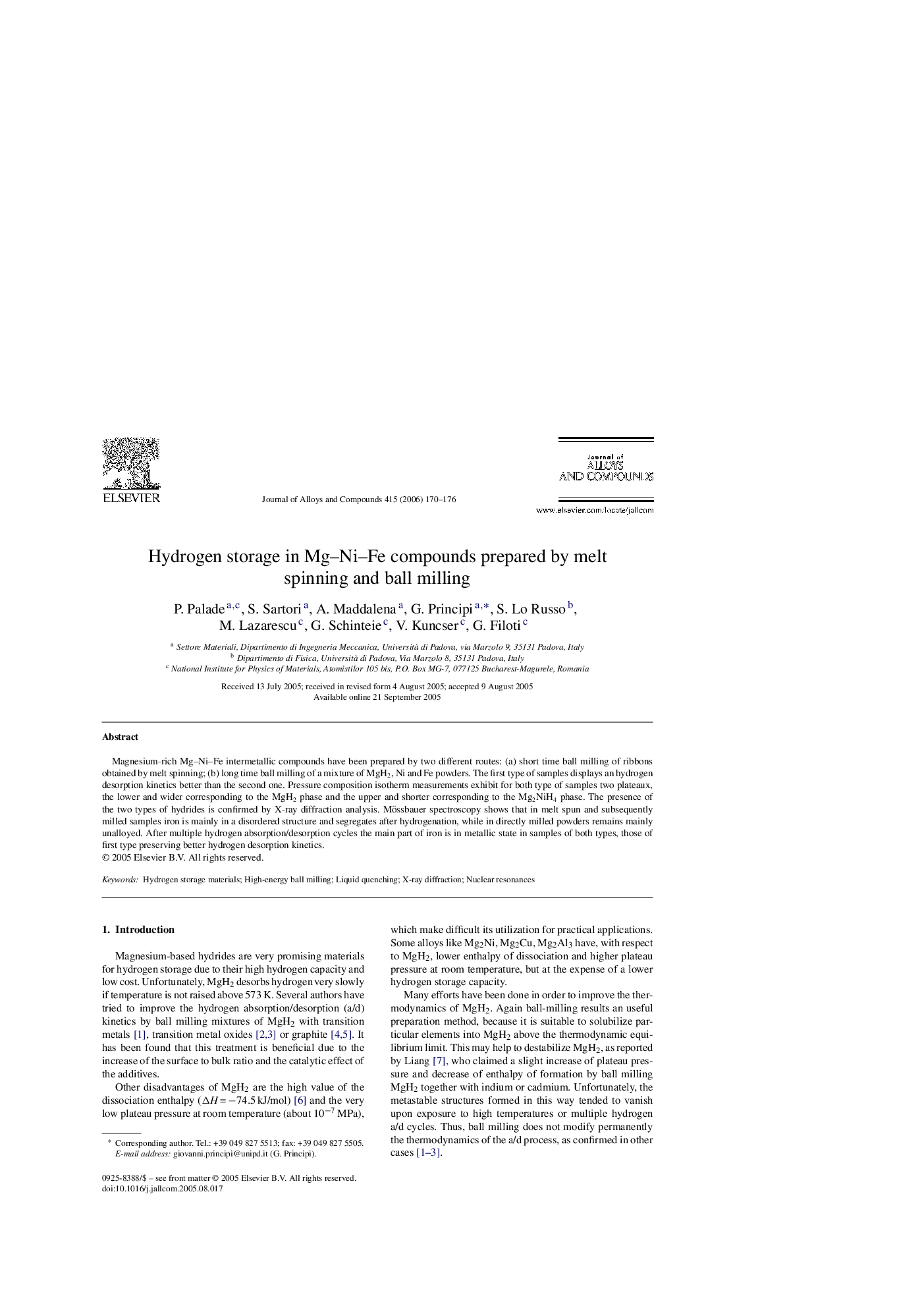| Article ID | Journal | Published Year | Pages | File Type |
|---|---|---|---|---|
| 1627779 | Journal of Alloys and Compounds | 2006 | 7 Pages |
Magnesium-rich Mg–Ni–Fe intermetallic compounds have been prepared by two different routes: (a) short time ball milling of ribbons obtained by melt spinning; (b) long time ball milling of a mixture of MgH2, Ni and Fe powders. The first type of samples displays an hydrogen desorption kinetics better than the second one. Pressure composition isotherm measurements exhibit for both type of samples two plateaux, the lower and wider corresponding to the MgH2 phase and the upper and shorter corresponding to the Mg2NiH4 phase. The presence of the two types of hydrides is confirmed by X-ray diffraction analysis. Mössbauer spectroscopy shows that in melt spun and subsequently milled samples iron is mainly in a disordered structure and segregates after hydrogenation, while in directly milled powders remains mainly unalloyed. After multiple hydrogen absorption/desorption cycles the main part of iron is in metallic state in samples of both types, those of first type preserving better hydrogen desorption kinetics.
